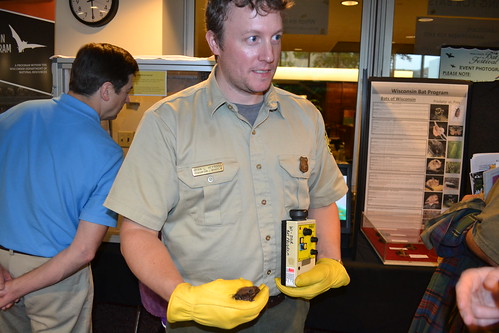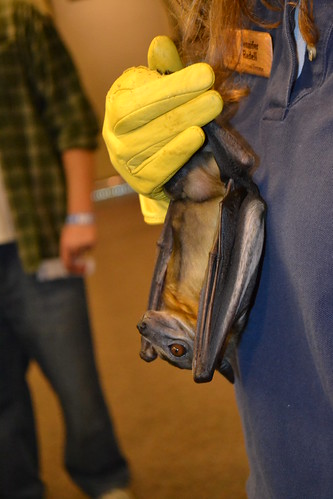
Bats have quite the list of positive effects in our world, from the billions of dollars they save in pesticides to natural pollination and seed spreading. Bats eat about one-half of their body weight in insects each night.
We need bats.
In honor of our furry, flying mammal friends, consider pulling for bats during Bat Week from Oct. 24-31. You can make a difference, whether you get a group together to literally pull invasive plants to help improve habitat and food for bats or figuratively “pull” for bats by sharing why they are important to our ecosystem with your friends and family. And, the great news is that you don’t have to be an adult to help bats.
Kids across America are getting involved in bat conservations in their own backyards. From science projects to lunchtime bat groups to social media campaigns, there are many ways for kids to get involved with helping bats. But don’t take our word for it – we have eight amazing kids from across the USA excited to share their batty experiences. The Bat Squad! webcast series for kids airs during Bat Week featuring four 15-minute webcasts with amazing, action-oriented footage streamed live from BatWeek.org. The webcasts are matched with a Project EduBat activity that is aligned with Next Generation Science Standards.

Recently, Batman and Smokey Bear joined partners to “pull” for bats in Wisconsin as part of the Wisconsin Bat Festival at the Milwaukee Public Museum. Participants got up close and personal with a number of live native and non-native bats such as a big brown bat, a straw-coloured fruit bat, and a Malayan flying fox, the largest bat in the world. Others put their construction skills to use making green bat boxes from repurposed Chevy Volt materials. Completed bat boxes will be placed on national forests, such as the Chequamegon-Nicolet National Forest, providing much needed habitat to native species.
The event also featured a 70-foot inflatable cave where kids could explore. Brave cavers saw cave formations, bats on walls, and were able to touch the bones and skulls of various animals.
Before entering the cave, everyone was required to take off their street shoes. That served as a lesson about the real-world rules on exploring caves, as explained in an online training video. We all have a role in protecting our caves from White Nose Syndrome in order to #SavetheBats.

An inspiring visitor to the U.S. Forest Service booth was a group of school age children who love bats so much they are in the midst of writing a children’s book to share with other children about why bats are so important.
We hope you’re inspired. Find more information on an invasive pulls near you the Bat Conservation International Inc. Batweek. The site also has fact sheets about invasive plants, why bats are important and archived webcasts.
Want to find a place near you to see bats on your public lands? Read more about these heroes of the night Recreation.gov and how you can help.



